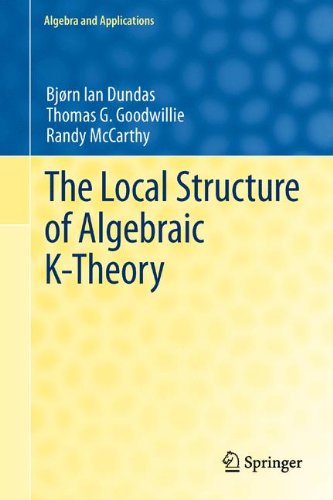

Most ebook files are in PDF format, so you can easily read them using various software such as Foxit Reader or directly on the Google Chrome browser.
Some ebook files are released by publishers in other formats such as .awz, .mobi, .epub, .fb2, etc. You may need to install specific software to read these formats on mobile/PC, such as Calibre.
Please read the tutorial at this link: https://ebookbell.com/faq
We offer FREE conversion to the popular formats you request; however, this may take some time. Therefore, right after payment, please email us, and we will try to provide the service as quickly as possible.
For some exceptional file formats or broken links (if any), please refrain from opening any disputes. Instead, email us first, and we will try to assist within a maximum of 6 hours.
EbookBell Team

5.0
90 reviewsAlgebraic K-theory encodes important invariants for several mathematical disciplines, spanning from geometric topology and functional analysis to number theory and algebraic geometry. As is commonly encountered, this powerful mathematical object is very hard to calculate. Apart from Quillen's calculations of finite fields and Suslin's calculation of algebraically closed fields, few complete calculations were available before the discovery of homological invariants offered by motivic cohomology and topological cyclic homology. This book covers the connection between algebraic K-theory and Bökstedt, Hsiang and Madsen's topological cyclic homology and proves that the difference between the theories are ‘locally constant’. The usefulness of this theorem stems from being more accessible for calculations than K-theory, and hence a single calculation of K-theory can be used with homological calculations to obtain a host of ‘nearby’ calculations in K-theory. For instance, Quillen's calculation of the K-theory of finite fields gives rise to Hesselholt and Madsen's calculations for local fields, and Voevodsky's calculations for the integers give insight into the diffeomorphisms of manifolds. In addition to the proof of the full integral version of the local correspondence between K-theory and topological cyclic homology, the book provides an introduction to the necessary background in algebraic K-theory and highly structured homotopy theory; collecting all necessary tools into one common framework. It relies on simplicial techniques, and contains an appendix summarizing the methods widely used in the field. The book is intended for graduate students and scientists interested in algebraic K-theory, and presupposes a basic knowledge of algebraic topology.